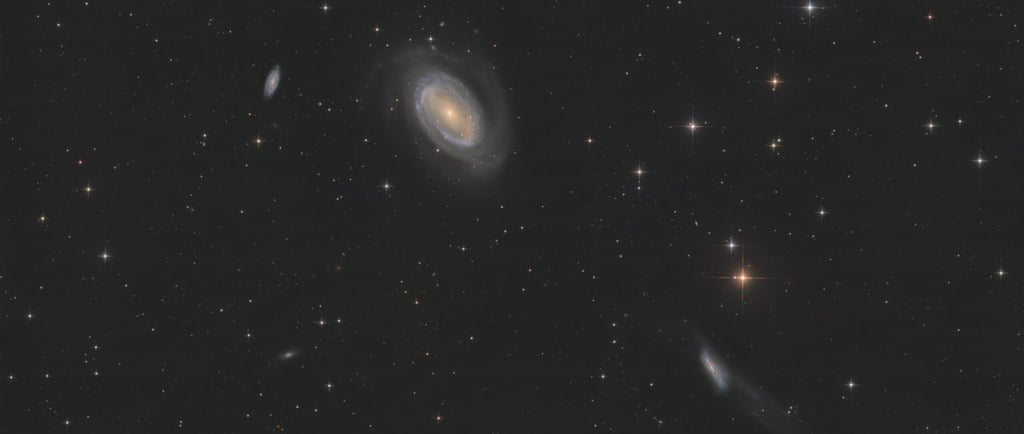Holm 468: The Optical Galaxy Triplet


Introduction to Holm 468
In the vast expanse of the universe, unique groups of galaxies provide astronomers and enthusiasts alike with intriguing subjects for study. One such remarkable formation is the optical galaxy triplet known as Holm 468, comprised of three prominent galaxies: NGC 4725, NGC 4747, and NGC 4712. This triplet showcases the beauty of cosmic interactions and offers insights into galactic evolution and dynamics.
Exploring the Galaxies of Holm 468
NGC 4725, often regarded as the brightest member of the Holm 468 triplet, captivates observers with its striking spiral structure. Positioned approximately 40 million light-years away in the constellation Coma Berenices, NGC 4725 exhibits a prominent one-armed spiral pattern, which is quite rare. Its notable features reflect the complexities of gravitational interactions within the group.
In close proximity lies NGC 4747, which is slightly fainter but equally fascinating. This spiral galaxy displays a more regular structure yet demonstrates dynamic behaviors influenced by the nearby galaxies. The interactions between NGC 4725 and NGC 4747 are significant; they help shape one another's morphology, contributing to a mutual dance of gravity and light across the cosmos.
The third member of this trio, NGC 4712, is characterized by its peculiar shape and off-centered structure. This lenticular galaxy, with a distance similar to its companions, shows how diverse galaxy types can coexist within a relatively small region of space. Consequently, the interplay of these three galaxies in Holm 468 forms an environment rich in scientific inquiry.
The Significance of Studying Holm 468
Holm 468 is not merely an astronomical curiosity; it represents a broader understanding of galaxy formation and interaction. Studying this optical triplet allows astronomers to gather valuable data regarding how galaxies evolve over time. The gravitational forces at play can lead to star formation, alteration of galactic structures, and potentially even the eventual merging of galaxies. Insights derived from Holm 468 contribute to our understanding of the lifecycle of galaxies within clusters.
Moreover, the research into Holm 468 provides a glimpse into the fundamental processes that govern the dynamics of galaxy clusters. As each galaxy within the triplet interacts with the others, researchers can observe different stages of galactic evolution, contributing to theories regarding dark matter, cosmic expansion, and the fundamental makeup of the universe.
Conclusion
In summary, the optical galaxy triplet Holm 468, consisting of NGC 4725, NGC 4747, and NGC 4712, serves as a captivating subject worthy of detailed academic study. This remarkable formation not only reveals the beauty of the universe but also enhances our comprehension of galactic interactions and evolution. More research and exploration into Holm 468 will undoubtedly yield further discoveries, enriching our appreciation of the cosmos and the forces that shape it.
